平和と民主主義をめざす全国交歓会(ZENKO)の山川です。
以下の行動に取り組みます。みなさん是非ご参加ください。
●原発再稼動NO!停止・廃炉へ!OCCUPY KANDEN 『関西電力前100
時間座り込みアクション!』
先日、関電前で『わかもの120時間の座り込み』が行われました。
「これに続こう!」と、100時間の座り込みを行うことにしました。
・とき 12月 7日(水)16:00~11日(日)20:00まで。
・ところ 関西電力本店前(大阪市北区中之島3-6-16 地下鉄「肥後橋」駅300m)
?部分参加も含め、参加大歓迎! あったかくして来てください?
●12月11日(日)は、『原発なくそう御堂筋デモ』
14:30西梅田公園集合(JR大阪・新福島駅、阪神福島駅下車徒歩5~10分・
2号線沿 い・阪神高速池田線高架下)
15:00出発→関電→三菱重工(原発製造)→御堂筋→難波まで。
●お問い合わせ…山 川 携帯電話
携帯アドレス:ymkw4483._.genki@softbank.ne.jp
パソコンアドレス:yama-y@h6.dion.ne.jp
ブログ内・関連記事
よろしければ、下のマークをクリックして!

よろしければ、もう一回!

以下の行動に取り組みます。みなさん是非ご参加ください。
●原発再稼動NO!停止・廃炉へ!OCCUPY KANDEN 『関西電力前100
時間座り込みアクション!』
先日、関電前で『わかもの120時間の座り込み』が行われました。
「これに続こう!」と、100時間の座り込みを行うことにしました。
・とき 12月 7日(水)16:00~11日(日)20:00まで。
・ところ 関西電力本店前(大阪市北区中之島3-6-16 地下鉄「肥後橋」駅300m)
?部分参加も含め、参加大歓迎! あったかくして来てください?
●12月11日(日)は、『原発なくそう御堂筋デモ』
14:30西梅田公園集合(JR大阪・新福島駅、阪神福島駅下車徒歩5~10分・
2号線沿 い・阪神高速池田線高架下)
15:00出発→関電→三菱重工(原発製造)→御堂筋→難波まで。
●お問い合わせ…山 川 携帯電話
携帯アドレス:ymkw4483._.genki@softbank.ne.jp
パソコンアドレス:yama-y@h6.dion.ne.jp
ブログ内・関連記事
よろしければ、下のマークをクリックして!
よろしければ、もう一回!











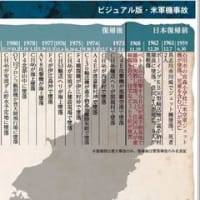
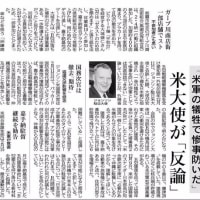


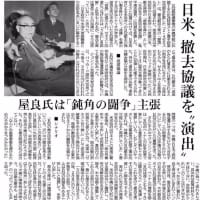

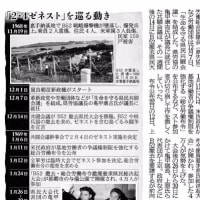
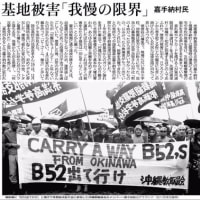
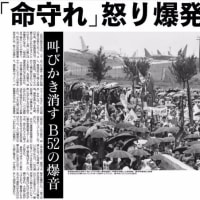
By HIROKO TABUCHI
TOKYO ― At least 45 tons of highly radioactive water has leaked from a purification facility at the Fukushima Daiichi buclear power stationnt, and some of it may have reached the Pacific Ocean, the plant’s operator said on Sunday.
Nearly nine months after Fukushima Daiichi was ravaged by an earthquake and tsunami, the plant continues to pose a major environmental threat. Before the latest leak, the Fukushima accident had been responsible for the largest single release of radioactivity into the ocean, threatening wildlife and fisheries in the region, experts have said.
The new radioactive water leak called into question the progress that the plant’s operator, Tokyo Electric Power Company, appeared to have made in bringing its reactors under control. The company, known as Tepco, has said that it hopes to bring the plant to a stable state known as a cold shutdown by the end of the year.
The trouble on Sunday came in two stages, a Tepco statement said. In the morning, utility workers found that radioactive water was flooding a catchment next to a purification device; the device was then switched off, and the leak appeared to stop. But the company said it later discovered that leaked water was escaping through a crack in the catchment’s concrete wall and was reaching an external gutter.
In all, as much as 220 tons of water may now have leaked from the facility, according to a report in the Asahi Shimbun newspaper that cited Tepco officials.
The newspaper says the water may have contained up to one million times as much radioactive strontium as the maximum safe level set by the government, and about 300 times as much radioactive cesium. Both are readily absorbed by living tissue and can greatly increase the risk of developing cancer.
Tepco said it was exploring ways to stop the water from leaking through the crack.
Since the disaster in March, workers have been struggling to cool the stricken plant’s reactors by flooding them with water, which is contaminated with radioactivity in the process and becomes a problem of its own.
Tepco installed a new circulatory cooling system in September that was meant to decontaminate and recycle the cooling water. But the company acknowledges that some water has already leaked into the ocean and more remains in the flooded basements of the plant’s reactor buildings.
The Institute for Radiological Protection and Nuclear Safety in France estimates that between March and mid-July, the amount of radioactive cesium 137 that had leaked into the Pacific from the Fukushima Daiichi plant amounted to 27.1 petabecquerels, the greatest amount known to have been released from a single episode. (A becquerel is a frequently used measure of radiation, and a petabecquerel is a million billion becquerels.)
Ocean currents rapidly dilute the leaking radioactive water, the institute said, but mollusks, deep-water fish and predators high in the marine food chain can be sensitive to radioactive cesium pollution.